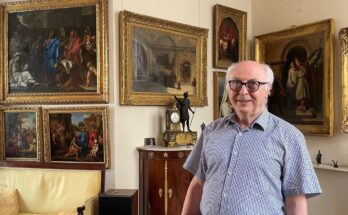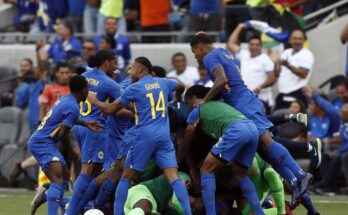I don’t remember the last time I walked hand in hand with my father, but I remember that on December 4, 1977, around ten or eleven in the morning, he bought me a green and white flag near the Murillo gardens and that, having arrived in San Fernando Street, in front of the old tobacco factory transformed into a university, we joined a wave of people – a wave of people who had never seen each other in Seville and would never see each other again – who were demanding freedom, the amnesty and the Statute. of autonomy. I don’t remember if I continued for months or maybe years hand in hand with my father, but I remember that the child I was then was happy that day; he held one hand in his and, in the other, an Andalusian flag.
Almost 48 years have passed. My father has not been here for a long time, as have many of the dreams that united so many Andalusians from all provinces and all ideologies that day. Maybe that’s why, when I heard on the radio on Tuesday morning that Puri, Loli and Paqui, the sisters of Manolo García Caparrós, were going to Congress, I felt I had to go.
And there they were, at the feet of the lions, having just arrived by train from Malaga, where on 4 December 1977, as in all Andalusian capitals, a large demonstration demanded the full autonomy of Andalusia, in principle reserved exclusively for Catalonia, Euskadi, Navarra and Galicia.
A few days earlier, Francisco Cabezas, then president of the Provincial Council, but who in the last years of the Franco regime had been deputy provincial head of the Movement, had refused to fly the green-and-white flag on the balcony next to the Spanish one. When the protesters arrived at the Alameda de Colón, one of them, Trinidad Berlanga, climbed the facade of the Provincial Council building with the intention of displaying the Andalusian flag. The Armed Police accused of violence against the demonstrators and a bullet killed Manuel José García Caparrós, who was 18 years old, worked in the Victoria brewery and was a member of the Comisiones Obreras union.
“That bullet,” says Loli in the courtyard of the Congress, “was aimed at all of Andalusia, but the only one who didn’t return home was my brother Manolo.”
A journalist asks García Caparrós’ sisters what they felt when they received the two filing cabinets with 2,000 pages of documentation and a memory stick with audio files that until now had remained secret and in which they could finally find the name of their brother’s killer.
“Very cold,” Loli says, “but not cold from the cold, but cold from not knowing.”
And what would they like to find?, insists another journalist: “The truth. The truth about what happened that day. Who was his murderer, who sent the police into the streets, why they didn’t let the flag of Andalusia be raised, which is the only thing we were asking for. This is what we hope to find.”
They say they are excited, and it is difficult not to share that emotion when you consider that the three of them were twenty years old at the time, and that from that moment when someone rang their doorbell telling them that their brother Manolo was in hospital because he had been in a car accident, they have not stopped hearing lies. Many lies deliberately to hide the name of the murderer, and also silence, a lot of silence, almost half a century of silence, to see if they were bored.
You never know on what day, at what moment, he absentmindedly let go of his father’s hand, never to take it back again. They, Puri, Loli and Paqui García Caparrós, have never let go of the memory of their brother Manolo.
In ancient Greek the opposite of “truth” is not “lie”; the opposite of truth is oblivion.
Today some justice is done to Manuel García Caparrós pic.twitter.com/ga0u8e4ErM
— José Manuel G. Jurado🔻🇵🇸 (@JMGJurado) November 18, 2025
💚🤍💚 Finally Puri, Paqui and Loli know the whole truth about their brother’s murder after almost 50 years of fighting.
Truth, justice and reparation for Manuel José García Caparrós, young, humble worker, union member of the Workers’ Commissions and favorite son of Andalusia. pic.twitter.com/GUllPWRb8W
— Izquierda Unida Jerez 🔻 La Confluencia (@iujerez) November 18, 2025



